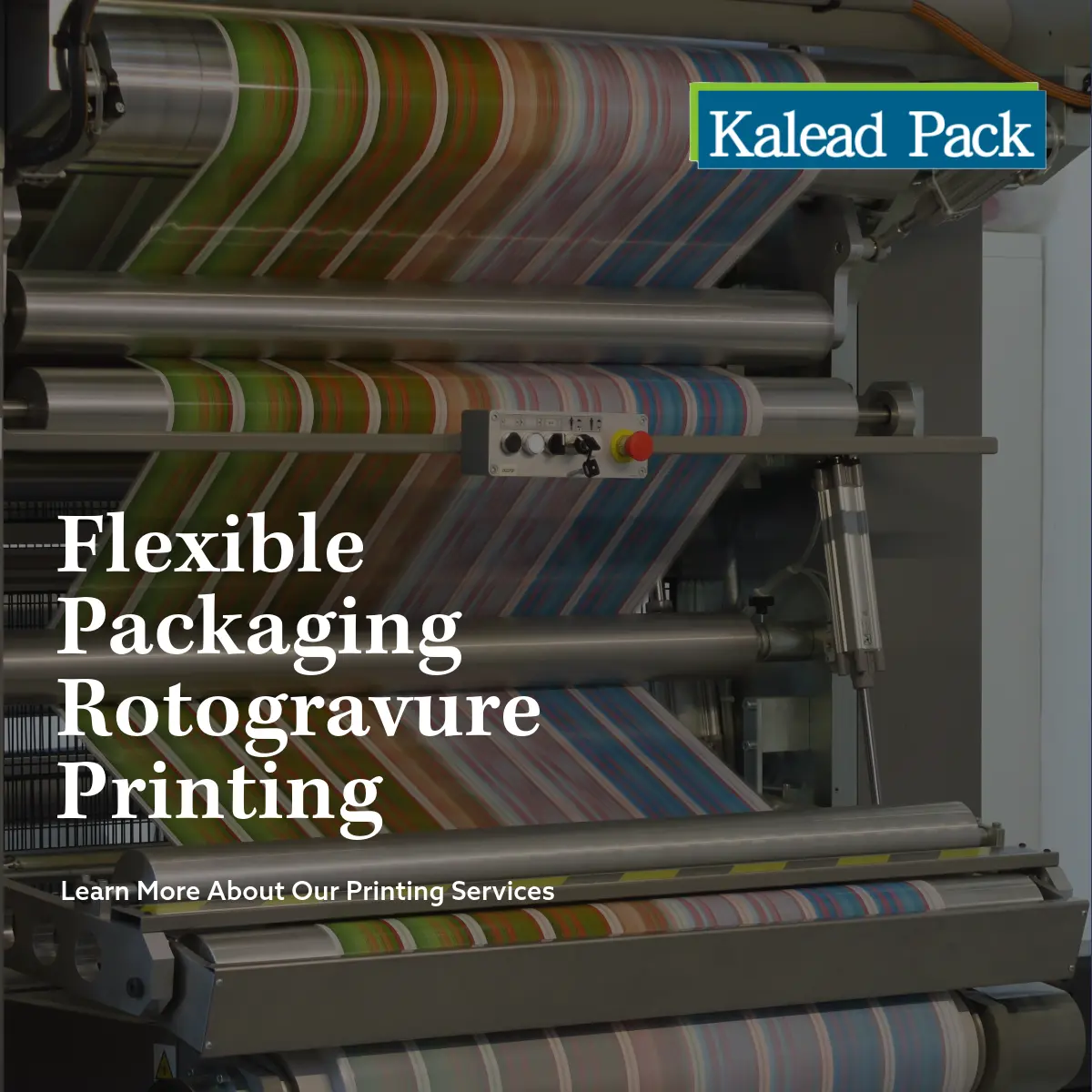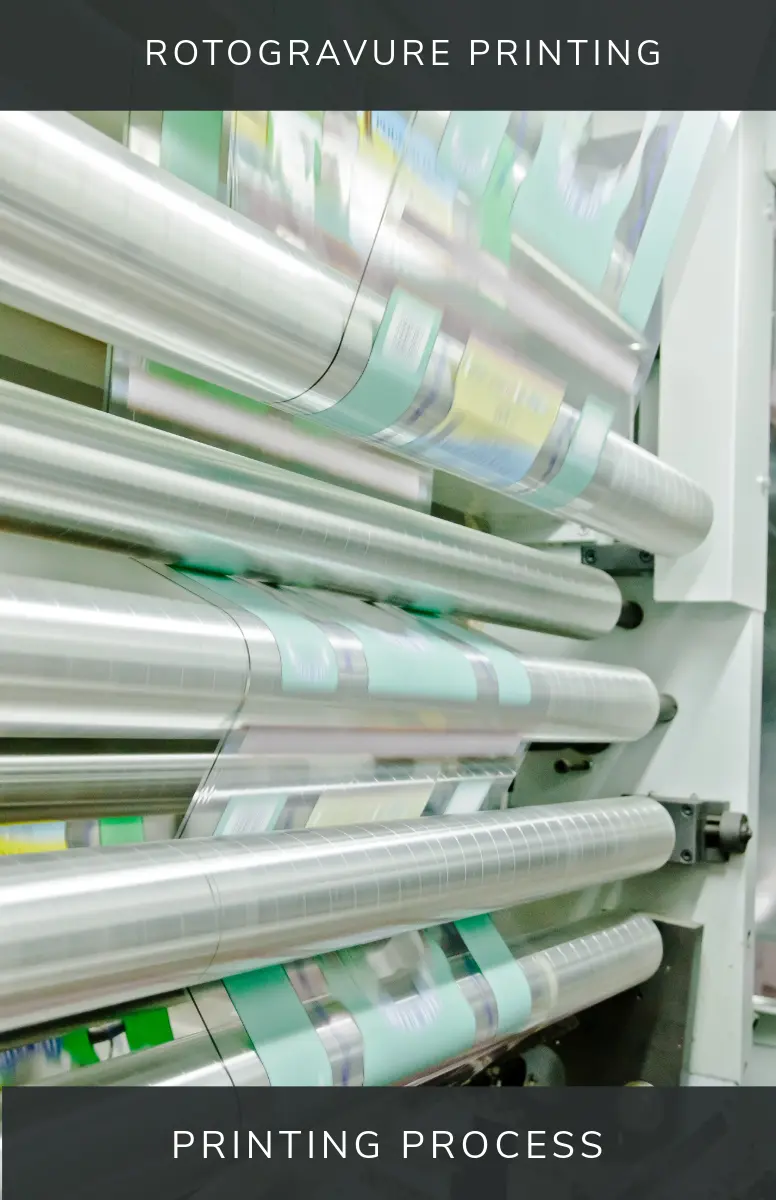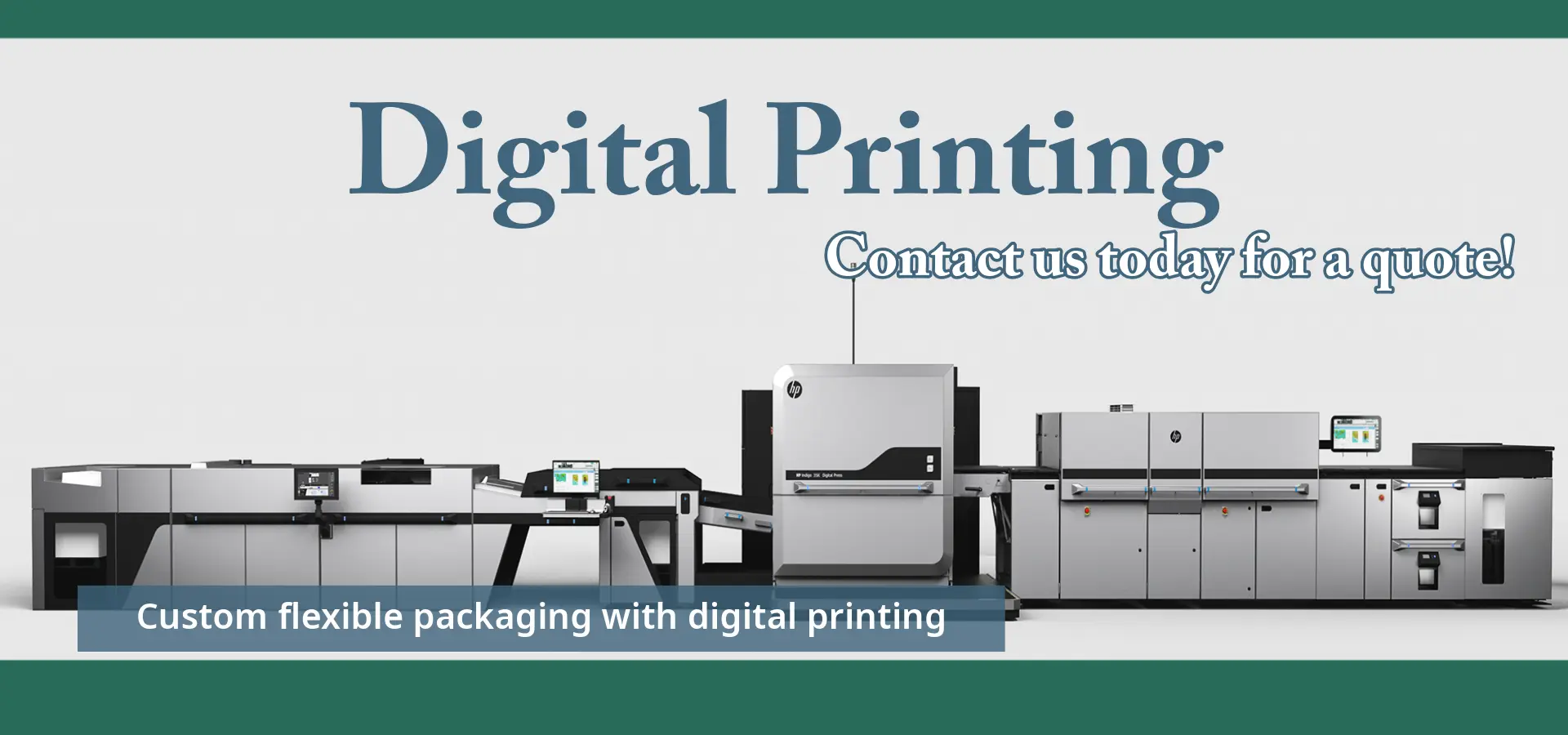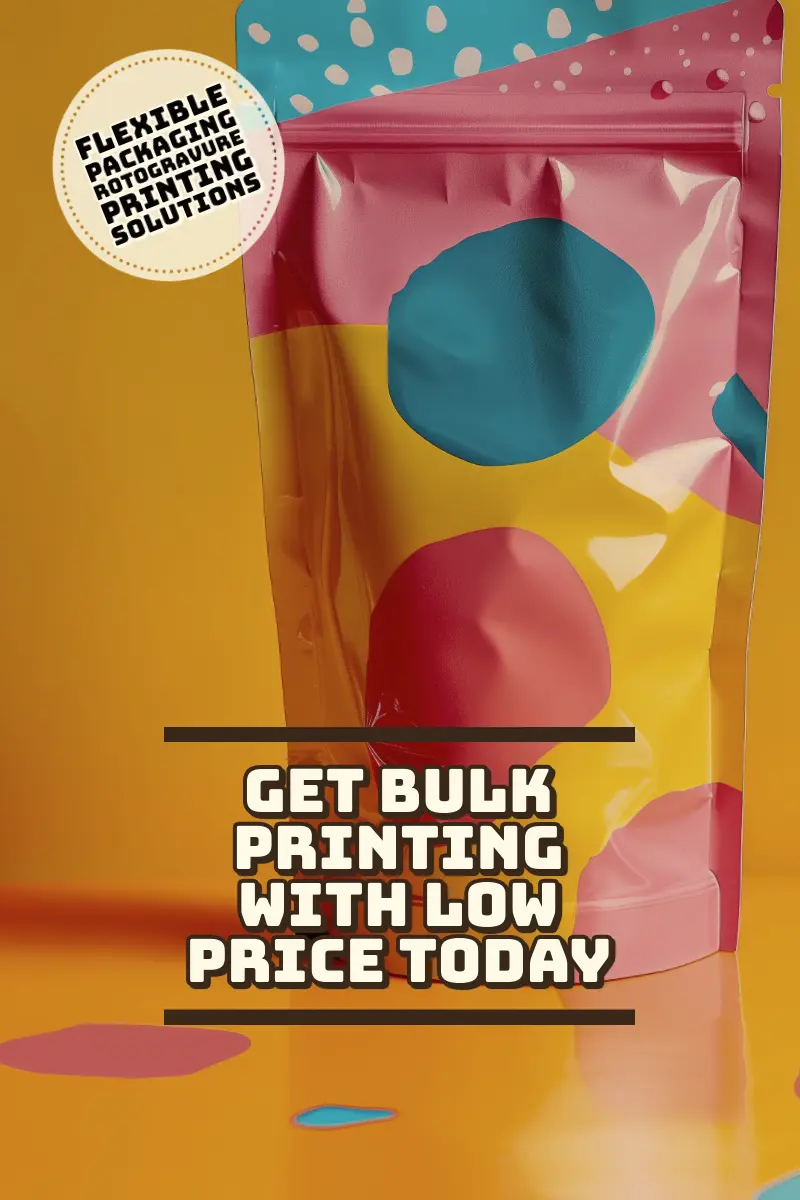Rotogravure Printing
Flexible packaging rotogravure printing remains the top choice for large-scale custom packaging. This well-established traditional printing technology provides high-quality image reproduction, making it ideal for various flexible packaging materials.
What Is Flexible Packaging Rotogravure Printing?
Flexible packaging rotogravure printing is an effective method to print images and text on plastic, foil, and paper. This process involves engraving the image onto a cylinder, which transfers the ink onto the packaging material. The cylinder contains tiny cells that hold the ink, and it transfers the ink to the material as it rotates.
One of the main benefits of rotogravure printing is its ability to produce high-quality, vivid images on packaging surface. This is perfect for packaging that needs to be eye-catching and detailed, like food, medicine, and other consumer products.
(Many food or non-food manufacturers use this printing method to make detailed designs on bulk packaging bags.)
The process starts with engraving the cylinder with the desired image, using either a laser or a diamond tool. The operator then mounts the cylinder onto the printing press, where it picks up ink from an ink fountain. A doctor blade removes excess ink, leaving the ink in the engraved cells. As the material passes through the press, it contacts the inked cylinder, transferring the image onto the material.
Rotogravure printing is efficient and fast, making it a cost-effective choice for large-scale production. It offers excellent color consistency and uses various inks and materials, making it suitable for different packaging needs.


Rotogravure Printing Process
1. Cylinder Engraving
The rotogravure printing process begins with cylinder engraving. A copper-plated steel cylinder gets engraved with tiny cells. Each cell holds ink.
2. Ink Application
Subsequently, the cylinder spins within an ink reservoir.. The cells fill with ink. A doctor blade scrapes off excess ink from the surface. Only the cells contain ink.
3. Printing
The cylinder then contacts the substrate, which could be paper or plastic film. The ink transfers from the cells to the substrate. This step ensures precise and consistent prints.
4. Drying Process
After printing, the material passes through drying ovens. These ovens evaporate solvents from the ink. This step is crucial to prevent smudging.
5. Material Rewinding
Finally, the printed material gets rewound onto a roll. This makes it ready for further processing or packaging. Rewinding ensures that the print remains intact.
6. Slitting
The slitting process begins with mounting the printed roll material onto the slitting machine. The machine uses rotary blades or laser cutting technology to cut the wide roll into strips of the desired width.
Advantages of Rotogravure Printing
High-Quality Image
Rotogravure printing offers excellent image quality. The process can produce highly detailed images with sharp lines and vivid colors. This makes it ideal for packaging that needs to stand out on shelves. Colors remain consistent across large print runs.
Flexible Substrate Printing
Rotogravure prints on multiple substrates. It works well with thin films, aluminum foil, and paper. This flexibility allows businesses to choose the best material for their products. For example, snack packaging often uses thin film for their durability and lightweight properties.
Cost-Effectiveness
Rotogravure is efficient for long-run printing jobs. The initial cost of creating engraved cylinders is high.
However, these cylinders last a long time without degrading. This leads to lower costs for large volume orders. Companies save money when producing millions of identical packages.
Cost Benefits
Rotogravure has significant cost benefits. Although setup costs are high, per-unit costs decrease with larger quantities. This makes it a cost-effective choice for products requiring mass production. Brands benefit from lower overall expenses while maintaining high-quality prints.
Rotogravure Printing for Large Production Runs
- Rotogravure printing may be an excellent option for brands looking to reduce per unit costs, especially for production runs of 10,000 units or more.
- It is a more durable and fade resistant printing method than digital printing.
- Pantone color matching is possible for accurate colors.
- It allows for a wide selection of pouch finishes and effects.
- Color consistency is excellent between print runs.
- Copper printing plates are used, one for each color, and can be reused for millions of impressions across multiple runs.
- Plate costs are one-time fees and often save more than after the first run.
- Individual plates can be replaced to update designs with changes to formula information.
Gravure Printing Vs Digital Printing
Flexible packaging printing has 2 common print methods. Here is the summary of them:
Gravure Printing:
- Best for high-volume, high-quality, and consistent print projects.
- Ideal for industries needing detailed and vibrant packaging, such as food and pharmaceuticals.
Digital Printing:
- Best for small to medium-sized print runs and customization projects.
- Ideal for businesses needing quick turnarounds and personalized prints, such as marketing materials and custom packaging.

Comparison of Digital and Gravure Printing
| Feature | Rotogravure Printing | Digital Printing |
|---|---|---|
| Technology | Uses engraved cylinders | Uses digital files and inkjet/laser |
| Setup Time | Long setup time | Short setup time |
| Cost Efficiency | Cost-effective for high volumes | Cost-effective for short runs |
| Print Quality | High-quality, consistent prints | High-quality, but may vary |
| Color Range | Excellent color reproduction | Good color range |
| Turnaround Time | Longer due to setup and production | Quick turnaround time |
| Flexibility | Less flexible, good for repeat jobs | Highly flexible, easy to change designs |
| Initial Cost | High initial cost due to cylinder engraving | Low initial cost |
| Variable Data Printing | Not suitable | Ideal for variable data printing |
| Environmental Impact | Higher waste and chemical use | Lower waste, more eco-friendly |
| Durability of Prints | Very durable and long-lasting up to 3 years | Durable, but may fade over time |
Frequently Asked Questions
The rotogravure printing process uses engraved cylinders to transfer ink onto a substrate. The cylinder rotates in an ink fountain, picks up ink in its engraved cells, and transfers it to the material.
Rotogravure printing offers high-quality and precise images, efficiency, and speed. Also cost-effective for large print runs because of its durability and fast production capabilities.
Yes, rotogravure printing is cost-effective for large volumes. Setting up may be expensive at first, but it saves money in the long run for large-scale production.
Yes, KaleadPack provides free samples and supports worldwide shipping. Please feel free to contact with us. We offer one-stop packaging solution, including pouch bags, film printing, and packaging machines

